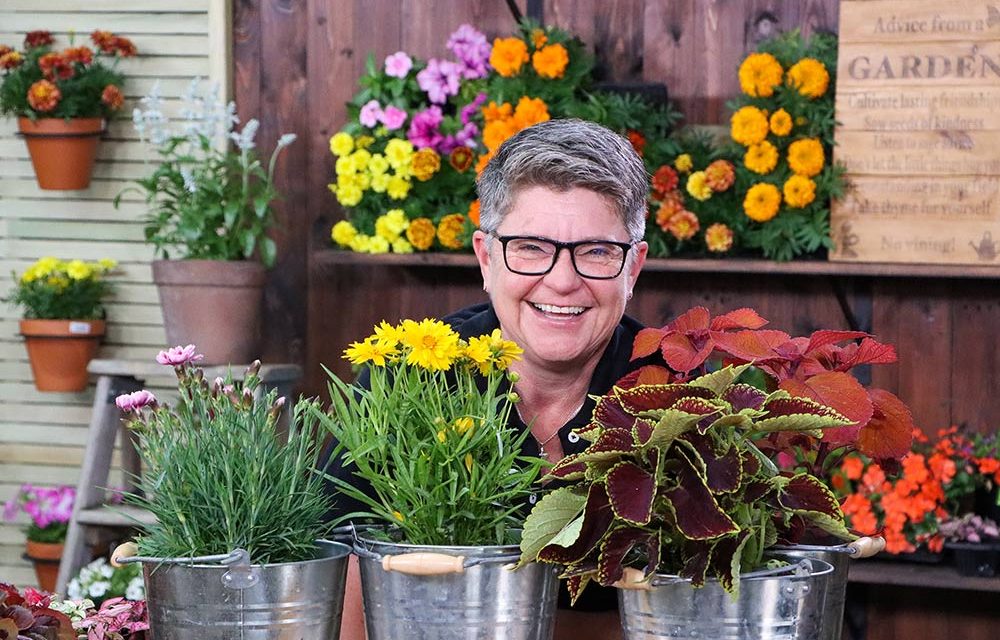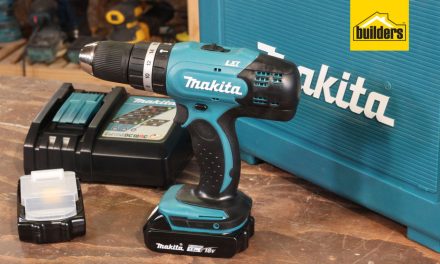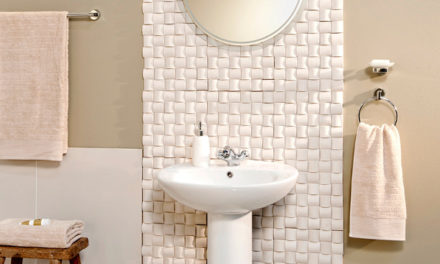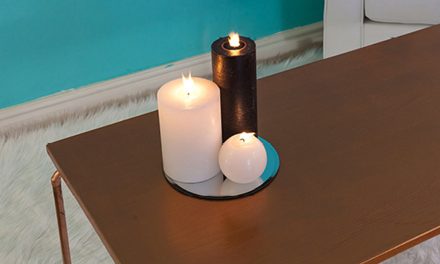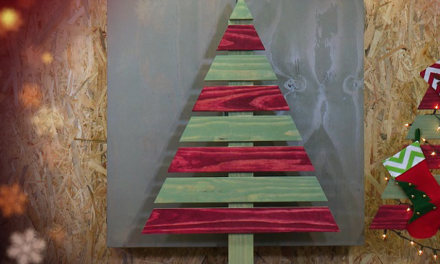You’ve got to plant smart if you want summer colour, so here are our pro tips from Tanya Visser.
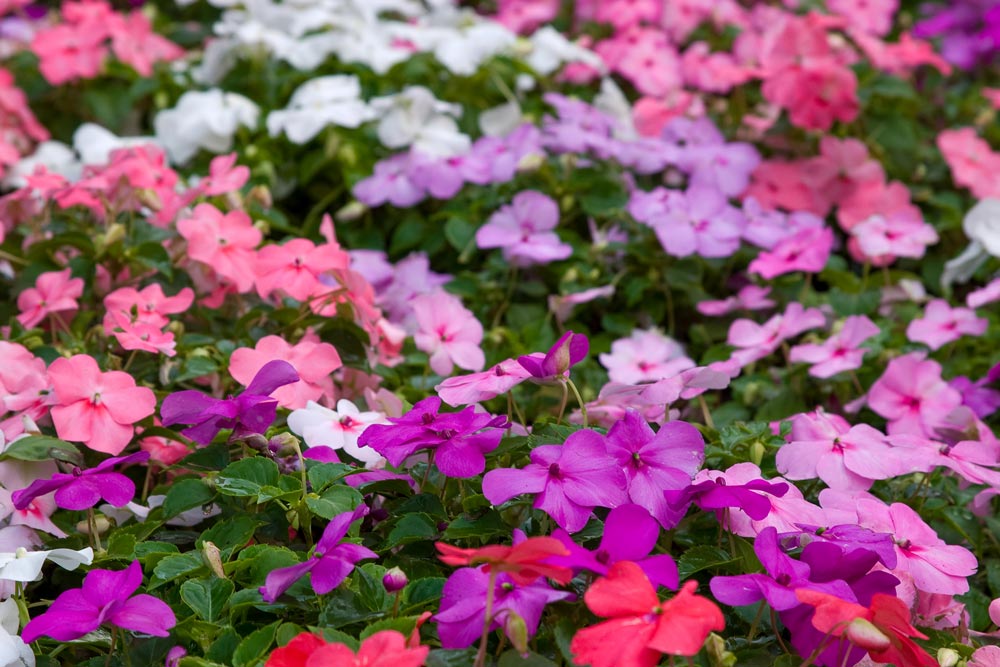
There are loads of different options that we can use for this time of the year, some of them perennials and some annuals. Remember, perennials are plants that will last for a number of years and annuals are plants that survive for just one season.
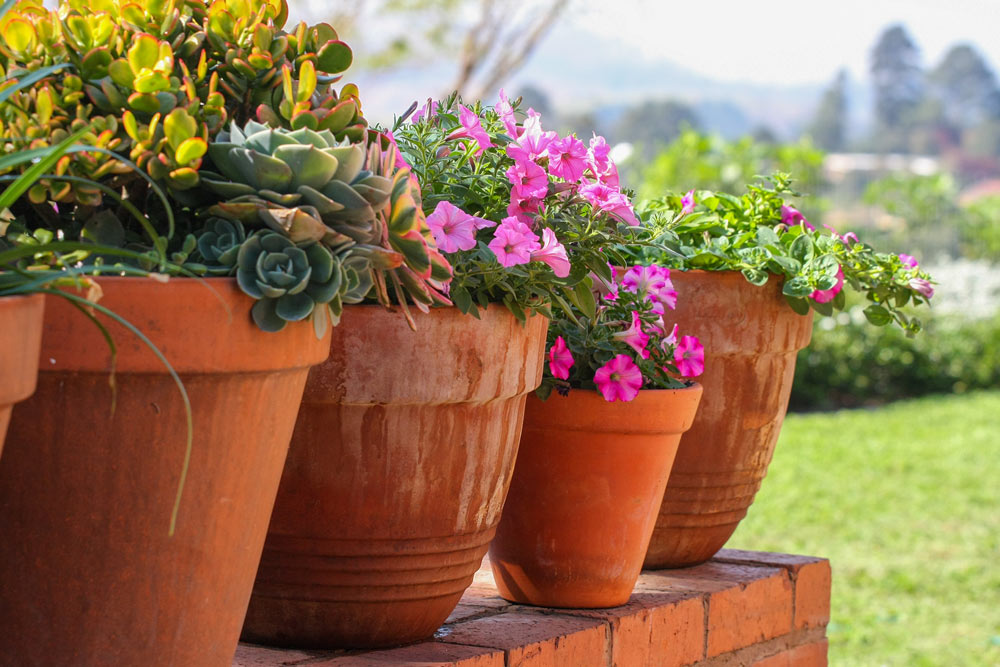
When it comes to annuals, these are generally the plants that you buy as seedlings from the garden section of your local Builders. These are the blooms that gives you a near-instant explosion of colour, particularly near the front of your garden. As with all plants, there will be some that enjoy full sun and some that enjoy semi- or full shade.
Here are the sun options. First up are marigolds and they come in a wide range these days. You get the extra-large blooms (‘Durango’), the pompom blooms, double blooms – it never ends. ‘Strawberry Blonde’ is one we would recommend and ‘Lemon Drop’ is another. Don’t worry about the names though – find one that you like, sufficient to a pot plant and hang the pots from a trellis or use them in the garden. They need at least 5 hours of sun a day. You can plant these from January all the way through to April, or throughout the year in a frost-free area.
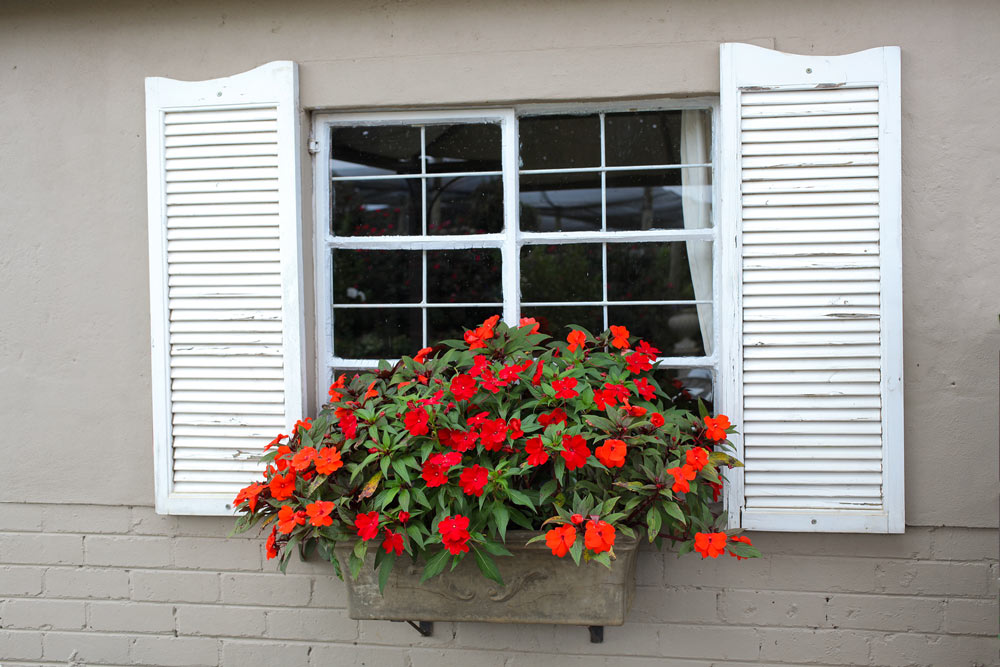
Next, we have petunias – another firm favourite amongst the annuals. There are two types of petunias: the big types are known as morns and the cousins, the little calibrachoas. With all petunias, it’s crucial that you water the soil and not the plant – if petunia flowers get wet, they absorb the water and turn into a mush. Also important is deadheading, in order to keep them flowering. To deadhead, find a flower that is going over (the petals will start to droop) and follow it down to the base where there is a leaf. Using your thumb and fingernails, simply pinch the flower off above the leaf. Do this to all old flowers and new ones will spring up in their place and your plant will flower for a long, long time.
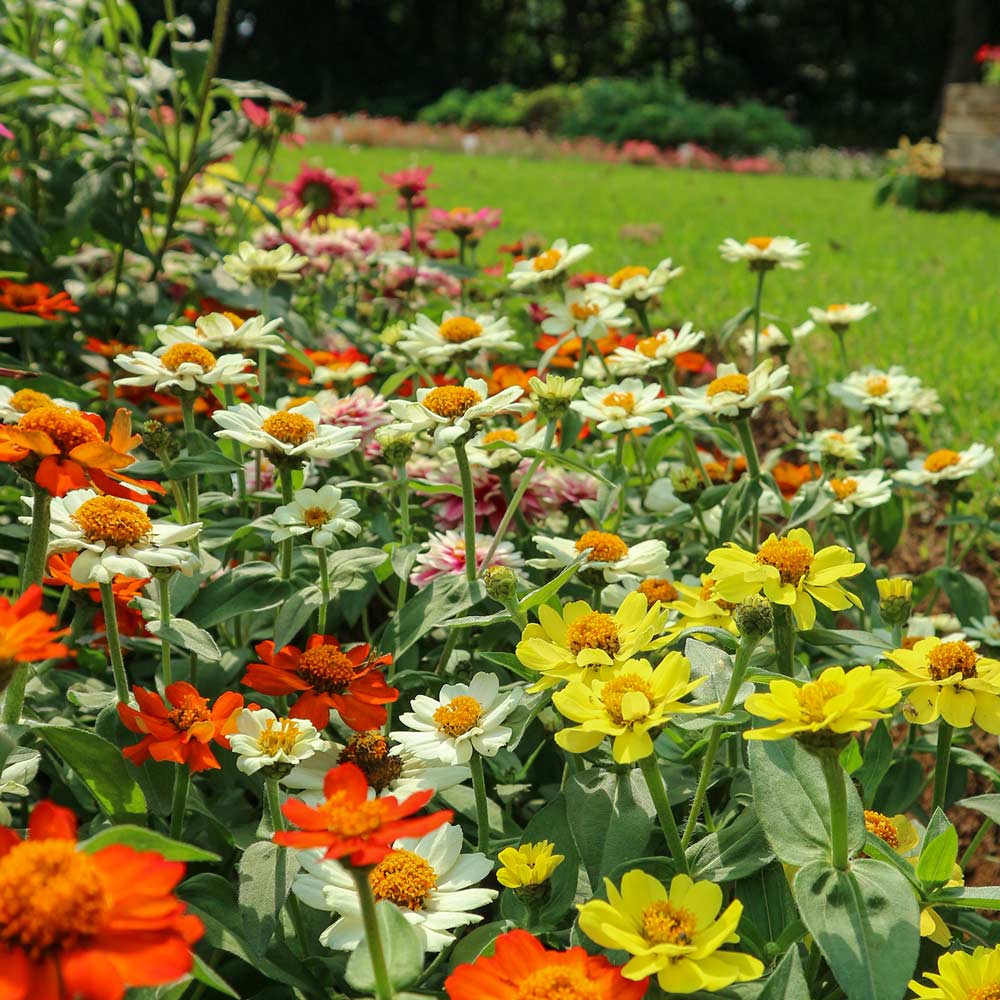
Another family of great summer bedding plants is the salvias. There are perennials, annuals and shrubs in this family but we’re going to focus on the annuals and perennials. They’re tough and don’t require much water and they can grow in full sun or partial sun. They also work very well as mid-planting for garden beds or in containers.
The annual salvias are used as bedding plants and don’t get too big (20 – 25 cm high). These are available in loads of different colours, require no maintenance and are beautiful. Again, deadheading will encourage repeat flowering. The best thing about salvias is that they can be planted in the height of summer and will give you colour right through to mid-autumn.
Zinnias are another gorgeous annual you should immediately think of for summer sun. They are about as tough as salvias and have beautiful round flowers that are quite flat and come in luminous yellow, lipstick pink, burnt orange and in mixes. They are tough, so don’t overwater them, and they can be planted from the height of summer all the way through to early winter.
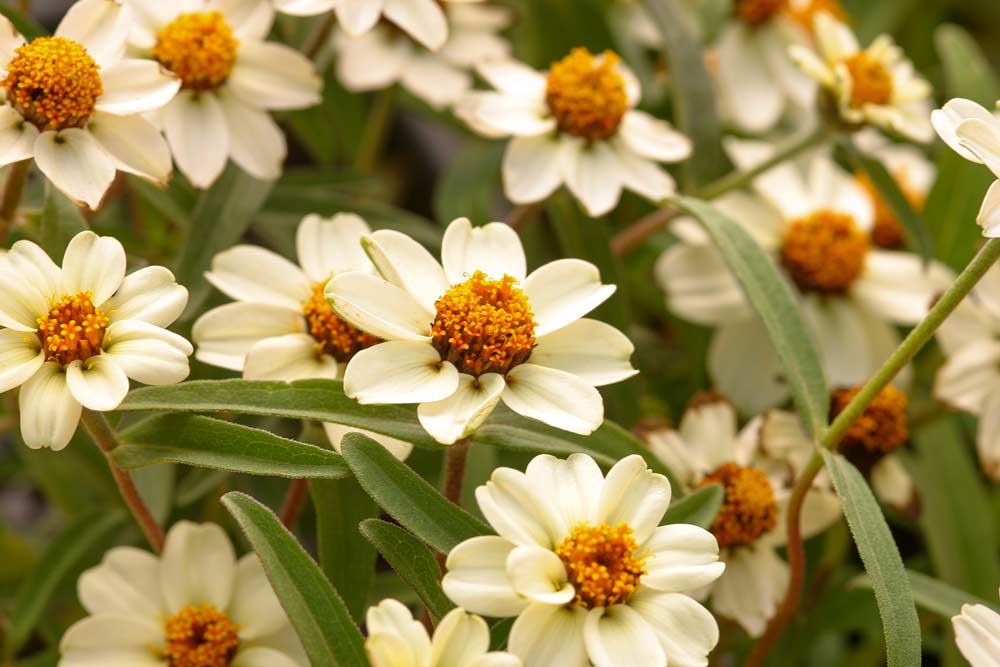
Then there are what we call ‘vygies’ – fantastic, tough, low-growing succulents with the most vibrant colours. You can get them in punnets or as single plants, and they love hot, sunny conditions where they are no-nonsense plants. They need sun to flower at their best.
Next we need to look at flower options for the shady garden. The best-loved of these plants has to be the impatiens, or as most of us call them, busy lizzies. They have been selectively bred over the years so that these days you can be assured that if you plant them, they won’t die of mildew!
Another choice for semi-shade or filtered light are torenias – short, compact mounded little plants with flowers in pinks, whites or even blues. Good plants that actually self-deadhead, which means that the dead flowers just fall off. They last well into autumn.
Moving on from annuals to perennials, which go on forever! Well, we say forever, but most perennials need to be replaced every 3 – 4 years or their performance will diminish.
Starting off with perennials for the shade, we recommend taking a look at hypoestes. You might recognise this from the houseplants section – because they do well in shade or dappled shade, they also make good houseplants. In pots or in the ground, in shade or near the base of trees or the house, this is a good option. They are low and compact but do need pruning when they get a bit scraggly. Prune hard, down to new leaves, and then feed with a good handful of organic fertiliser and away you go.
Another plant for the semi-shade is the coleus, which has a range of superbly intense colours. Next to yellows, grasses or groundcovers, they pop! They also need a good pruning when they start to get lanky, like the hypoestes.
Begonias are a great option for sun or shade and come in different varieties. The darker-leaved ones tend to enjoy full sun and the green-leaved options prefer semi-shade. Varieties like ‘Dragon Wings’ or ‘Baby Wings’ are what you should look out for – they grow taller and are super in the garden.
Moving on to the sun, both coreopsis and carnations are fantastic perennials that offer loads of colour. Just don’t overwater them! Another group of plants that goes with these two are geraniums, also known as pelargoniums. They come in a wide variety of forms, from trailing forms that are great in window boxes, to the more upright forms that work better as bedding plants. These are forgiving plants that don’t need much water, but they should be encouraged to flower more with regular deadheading.
When it comes to the care of perennials and general bedding plants, remember to feed them. One way to do is with an organic fertiliser pellet that can be placed around the base of the plant. Another option is a liquid fertiliser that can be added to the watering can when giving a plant a good soak.
Whether it’s in container or in garden beds, colour gives us joy and happiness, so follow our tips and you can get more colour for longer. Remember, Builders has fully stocked garden sections that have all the plants you want and everything you need to look after them.

